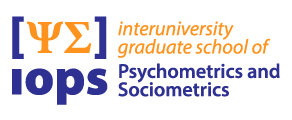Methodology and Statistics
Faculty of Social and Behavioural Sciences
Utrecht University
Academic webpage Chuenjai Sukpan
Project
Inequality-constrained model selection (for dynamical models)
Researchers are often interested in theory-driven hypotheses: for example, medicine A works better than medicine B, which works better than a placebo (in an anova model: µA > µB > µPlacebo); or the number of children is a stronger predictor for happiness than income (in a regression model: βNC > βInc). These theory-driven hypotheses can be evaluated with the goric or gorica, AIC-like criteria which can examine inequality constraints as in the examples. The goric(a) selects the best model/hypotheses out of a set; hence, the name model selection criteria. The goric is suitable for normal linear models, while the gorica is for a more general class of models.
In this project, I will extend the use of the goric and gorica to a wide range of models for which the performance is then evaluated by simulations. For instance, one promising method in SEM is the dynamical model DSEM (created by Mplus in collaboration with Ellen Hamaker). This model analyzes (intensive) longitudinal data, a type of data that is used more and more because of the widespread use of electronic devices that easily collect many repeated measurements. Mplus / DSEM renders an AIC / DIC value for each analyzed model, enabling the user to compare these models. With this, the user cannot always evaluate their a priori expectations, because they are generally represented by order-restricted hypotheses. Fortunately, the gorica can be applied to DSEM, which enables users to examine their inequality-constrained hypotheses. This is, however, never done before and, moreover, the performance of the gorica in DSEM is not examined. This is among others what I will be doing (via a simulation study), which might lead to the inclusion of the gorica in DSEM.
Summary of (possible) projects: 1) Lavaan and Mplus + Simulation study of performance of goric(a).
2+3) goric(a) in dynamic models: DSEM (Mplus) and VAR(1) and ct-sem + simulations.
4) Application on real data (preferably ESM data using a continuous-time model).
5) ‘My own project’.
6) Make tutorial(s) for goric and gorica R packages.
7) Make part of a goric(a) course; perhaps part of existing course
Supervisors
prof. dr. Ellen Hamaker, dr. Rebecca M. Kuiper
Financed by
The Royal Thai Government
Period
1 January 2019 – 31 December 2022
